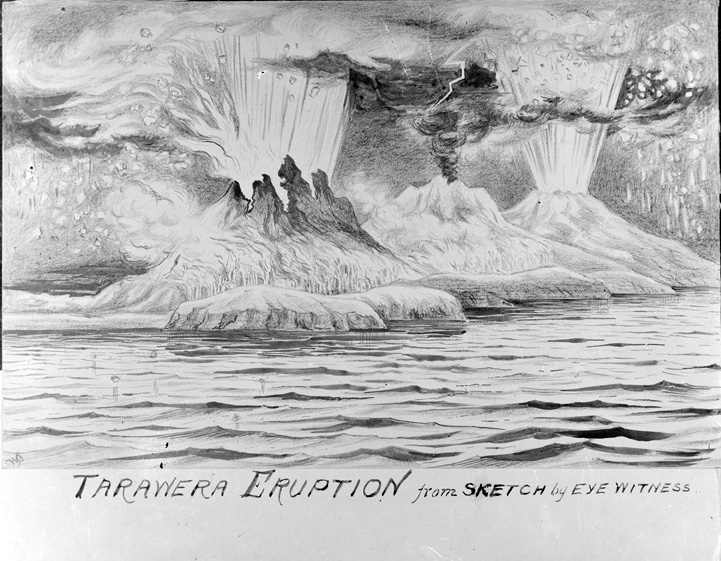As part of a Valley Profile series, MEGHAN HAWKES searches through old newspapers to bring you the stories Thames Valley locals once read about themselves.
1886
An enormous noise reminiscent of a cannon blast caused consternation in the Thames Valley.
The noise was the violent eruption of Mt Tarawera near Rotorua. Smoke and steam rising from the deadly explosion was distinctly seen and was watched with intense interest. Telegrams detailing the disaster caused great alarm and the Thames Advertiser office was besieged by an anxious throng. One victim was said to be Miss Bagnall of Thames but proved not be. Mr Crosbie, of Thames, however, who had been working at Tikitere, preparing for the construction of a hotel, had a narrow escape. The Tarawera eruption was visible from the top of the ranges in Ohinemuri, and dust and ashes fell as far as Te Aroha and Karangahake.
Poaching between Tararu and Tapu was rife. The poacher’s gun could often be heard, and on Saturdays and Sundays much more frequently. One of these pot-hunters shot five pheasants in the cemetery and another shot six on Mr McCormick’s farm. The licensed sportsman, waiting for the shooting season to open found that birds were scarce. Despite the difficulty in keeping down poaching in the country districts, inhabitants failed to see why it couldn’t be prevented in a town like Thames where there was a large staff of police with little or nothing to do.
Henry Plummer of Tapu sued Fred Jackson for exhibiting in his window a promissory note which read “The above bill was given for tucker supplied and cash lent to buy his wife and child clothes. He received over £250 from the Paroquet claim in six weeks, and then sneaked out of paying on a point of law; letting me in for £3 15s costs. I am bound to frame the promissory note to keep in remembrance the meanest thing that calls himself a man this side of the line.”
A ‘lizard monster’ at large across the Waikato was spotted in the river near Gibbons’ sawmill at Kōpū. For weeks the creature had been accused of livestock deaths and even taking carcasses from slaughter houses leaving a trail of strange footprints and striking fear into hearts across the district. The behemoth beast was followed upriver as far as Paeroa where it dived and disappeared. One witness described it as about seven feet long, black, with a head like a horse. The ‘monster’ was eventually caught near Paeroa and proved to be a large grey seal.
A parcel of 20 tons of ore from Waihī was to be sent to Europe for treatment at one of the Welsh or German Smelting Works. It had to be sent via Katikati, Bowentown and Auckland, owing to the disappearance of the Waihī – Paeroa road under a sea of mud, which compelled the Paeroa carters to strike. Intending travelers, it was advised, should see the Agent for the Accident Insurance Company before leaving Katikati and take a waterproof chaplain with them, with the Burial Service turned down at the corner. This road took the cake for being the worst in the North Island.




